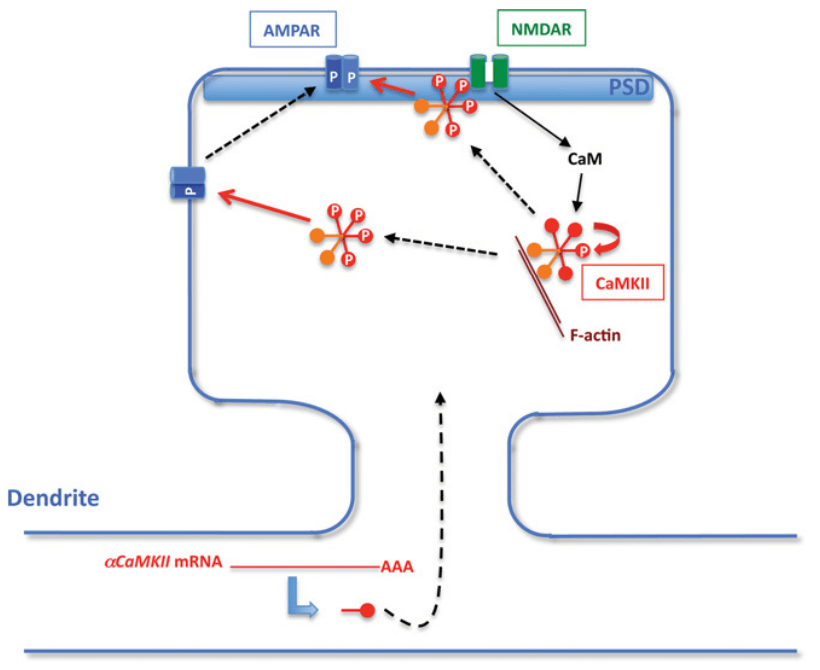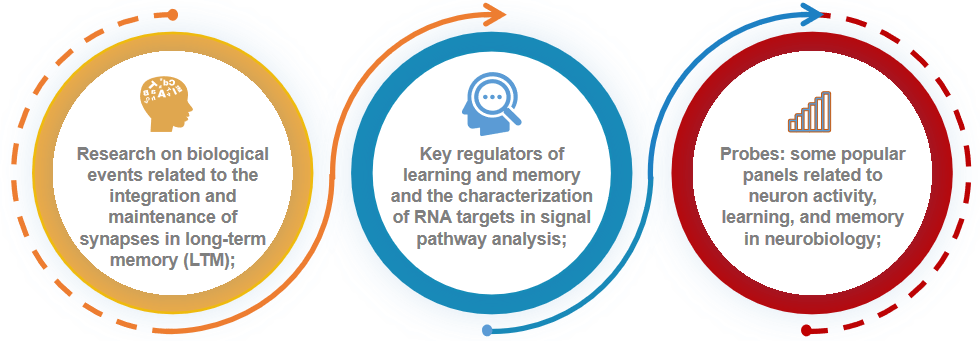Creative Bioarray provides in-situ visualization solutions based on popular panel-based neurobiology hotspot research, which is used for learning, memory, and related diseases in neurobiology research. Our service can help customers achieve the histological positioning of target mRNA. At the same time, our molecular platform also provides related protein level analysis services, such as IHC analysis of corresponding targets. Diversified choices, a high-quality service team, and a perfect equipment platform make us confident to provide customers with comprehensive analysis and testing services.
Neuronal Activity and Learning and Memory
Neurons are the cells that make up the brain and nervous system. They are the basic units for sending and receiving signals, allowing us to exercise muscles, feel the outside world, think, form memories, and so on. Learning and memory are mediated by neuronal plasticity, including lasting strengthening of existing synapses (for example, long-term potentiation), synapse generation, regulation of intrinsic excitability, and adult neurogenesis. Many protein kinases and signal pathways are involved in these plasticity processes. Learning and memory-related kinases seem to affect synaptic transmission by changing ion channel properties or ion channel density or regulating gene expression and protein synthesis, leading to structural changes in existing synapses and synapses. Signal pathways are usually intertwined with kinases, and to a certain extent can also be used as biomarkers. Our in-situ visual analysis solutions can help research areas related to memory and learning to achieve target morphological analysis.
 Fig 1. An example of the role of kinases in synaptic enhancement based on memory formation. (Giese K P, et al. 2013)
Fig 1. An example of the role of kinases in synaptic enhancement based on memory formation. (Giese K P, et al. 2013)
Visualization Solution for Neuron Interaction
Long-term memory (LTM) is established through the stable modification of neural circuits, including changes in the pattern and strength of synaptic connections, as well as the integration and maintenance of new synapses in existing circuits. These lasting modifications require protein synthesis. Several cell signaling cascades and proteins have become key regulators of learning and memory, such as cAMP/PKA, ERK/MAPK, mTOR signaling pathway, NMDA/AMPA receptor signaling, CaMKII, and cAMP response element binding protein (CREB). Most protein synthesis occurs in the cell body of neurons, and part of mRNA can be transported to synapses through RNA-binding protein complexes and translated "on-demand" based on synaptic activity, resulting in changes in the number and strength of synapses.
A hot field in neurobiology is the understanding of higher-order brain processing (including learning, memory, and cognition) and the mechanisms of neuropsychiatric diseases. We provide some popular panels related to neuronal activity, learning and memory for visualizing these related targets in tissue samples and visual analysis of tissue samples. Customers can choose the target formation scheme they are interested in, and our experts will give guidance on probe selection and customization.
 Fig 2. The core of the neuron interactive visualization solution.
Fig 2. The core of the neuron interactive visualization solution.
If you are interested in our service, please contact us for cooperation. We look forward to cooperating with you in the near future.
References
- Giese K P, Mizuno K. The roles of protein kinases in learning and memory[J]. Learning & memory, 2013, 20(10): 540-552.
- Wang W, Kwon E J, Tsai L H. MicroRNAs in learning, memory, and neurological diseases[J]. Learning & Memory, 2012, 19(9): 359-368.


 Fig 1. An example of the role of kinases in synaptic enhancement based on memory formation. (Giese K P, et al. 2013)
Fig 1. An example of the role of kinases in synaptic enhancement based on memory formation. (Giese K P, et al. 2013) Fig 2. The core of the neuron interactive visualization solution.
Fig 2. The core of the neuron interactive visualization solution.


